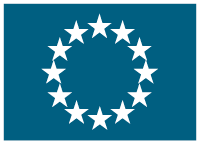A novel manufacturing process for photocatalytically activate ceramic tiles by digital printing.
(LIFE+ DIGITALIFE)
Start date: Jul 1, 2014,
End date: Dec 31, 2017
PROJECT
FINISHED
Background
Photocatalysis is a chemical reaction mediated by light, humidity and by photocatalysts, such as titanium dioxide (TiO2). It plays an important role in the oxidation of pollutants, biological toxic agents, and volatile organic molecules. Surfaces coated with a photocatalysts could therefore play an important role in improving air quality in indoor and outdoor environments. The current ceramic tile coating process entails spraying a mixture of TiO2 powder (micrometre and nanometre-sized particles), water and silica-based additives over the tile surface in a heating cycle (up to 680°C). Subsequently, the surface is brushed and washed with water, in order to remove excessive TiO2 particles, and to achieve a homogeneous surface. This process involves the consumption of large quantities of water and energy, while about 70% of the TiO2 powder is lost from input to final deposition. Although TiO2 is chemically inert, recent studies â though not yet conclusive â suggest that TiO2 nanoparticles may be potentially harmful for human health, especially for workers in close and prolonged contact with such powders.
Objectives
The objective of the LIFE DIGITALIFE project is to demonstrate an innovative approach to the production of photocatalytic surfaces, by using digital printing technology. This represents an important paradigm shift for state-of-the-art TiO2 coating processes.
The technology will be based on suitably designed print-heads, using an ink based on solvents, TiO2, and additives (e.g. silicon-based powders to facilitate surface vitrification), able to coat a wide range of tile surfaces (up to 1.5 by 3 m). The TiO2-based ink will be directly and homogeneously deposited on the tile surface, greatly reducing the quantities of TiO2 used and disposed of as waste, while also drastically reducing energy and water usage. Moreover, the use of an innovative water-based ink instead of a solvent-based ink will further reduce the processâ environmental impact. Finally, the solution will be validated and the project results widely disseminated in order to raise awareness of sustainable manufacturing, and of the positive environmental impact of eco-active tiles.
Expected results:
Environmental results:
About 12% energy saving (i.e. 0.004 kWh saving per m2 of product), achieved by reducing the baking time necessary to dry the TiO2-based coating;
100% water saving (i.e. 260 g/m2) due to replacing the spraying technology with the digital printing technology;
Saving of at least 50% of TiO2 (up to about 0.9 g/m2); and
Complete avoidance of petrochemical-origin solvent ink due to the use of an innovative water-based ink.
Socio-economic benefits:
20% cost reduction and 15-20% reduction in baking time;
Availability of cost-effective and sustainable products that improve air quality;
Demonstration of a technology that avoids using potentially harmful nanometric powders, further pushing the market towards sustainable and safe solutions;
Reduction of the pressure on water resources; and
Reduction of TiO2 waste and excess.
Get Access to the 1st Network for European Cooperation
Log In
or
Create an account
to see this content
Coordinator
- Valentino Capucci
- (Italy)
